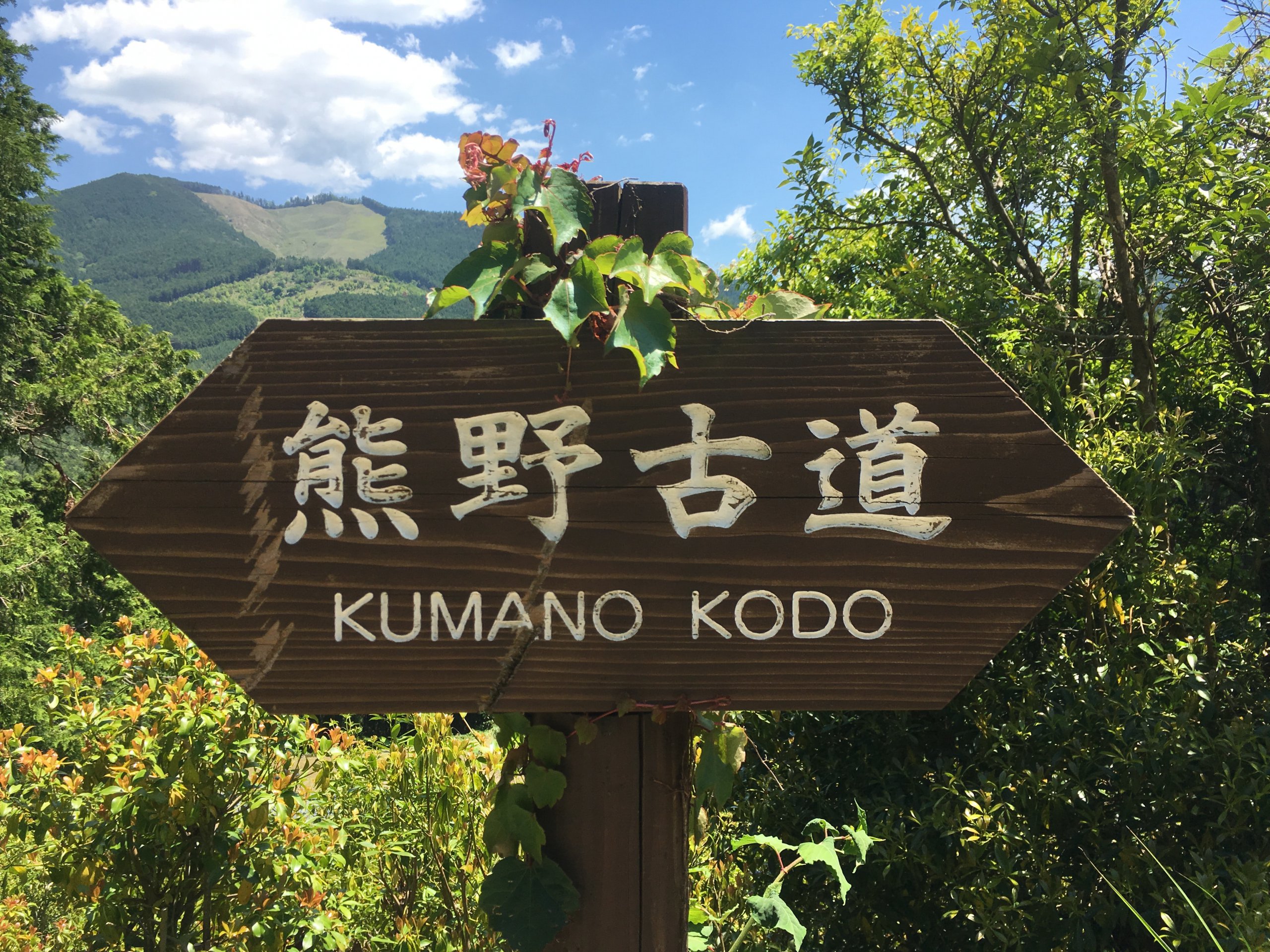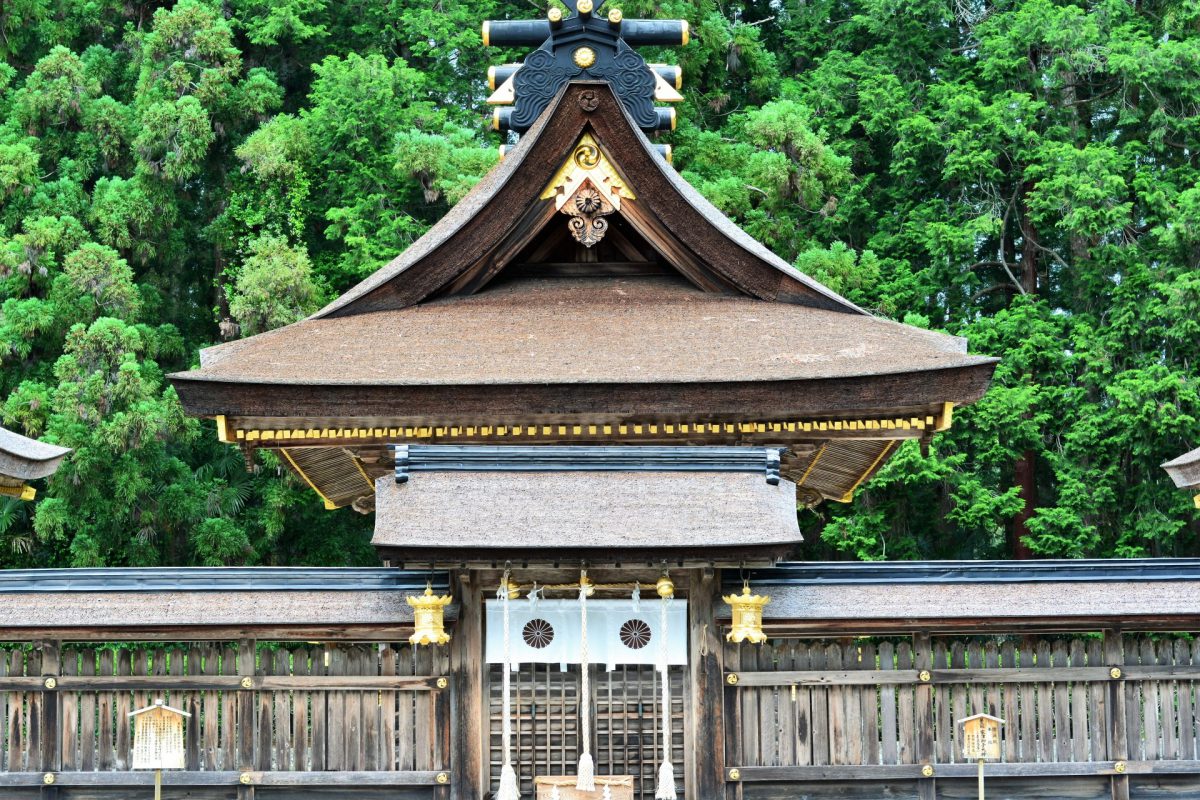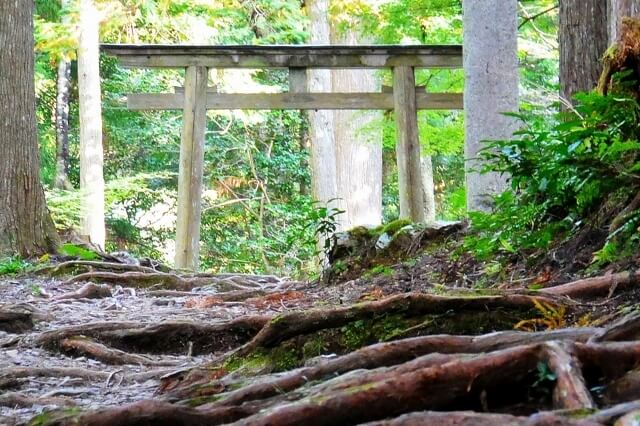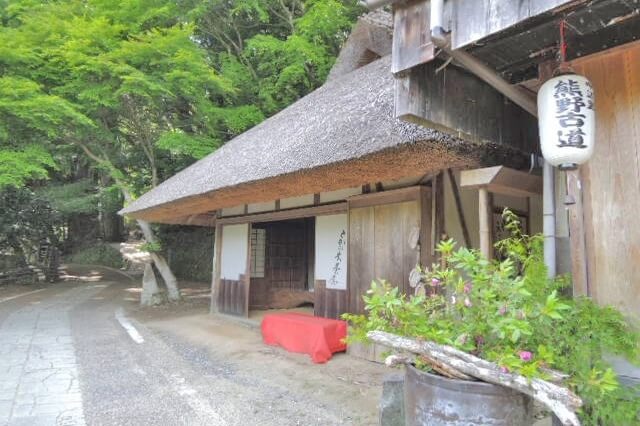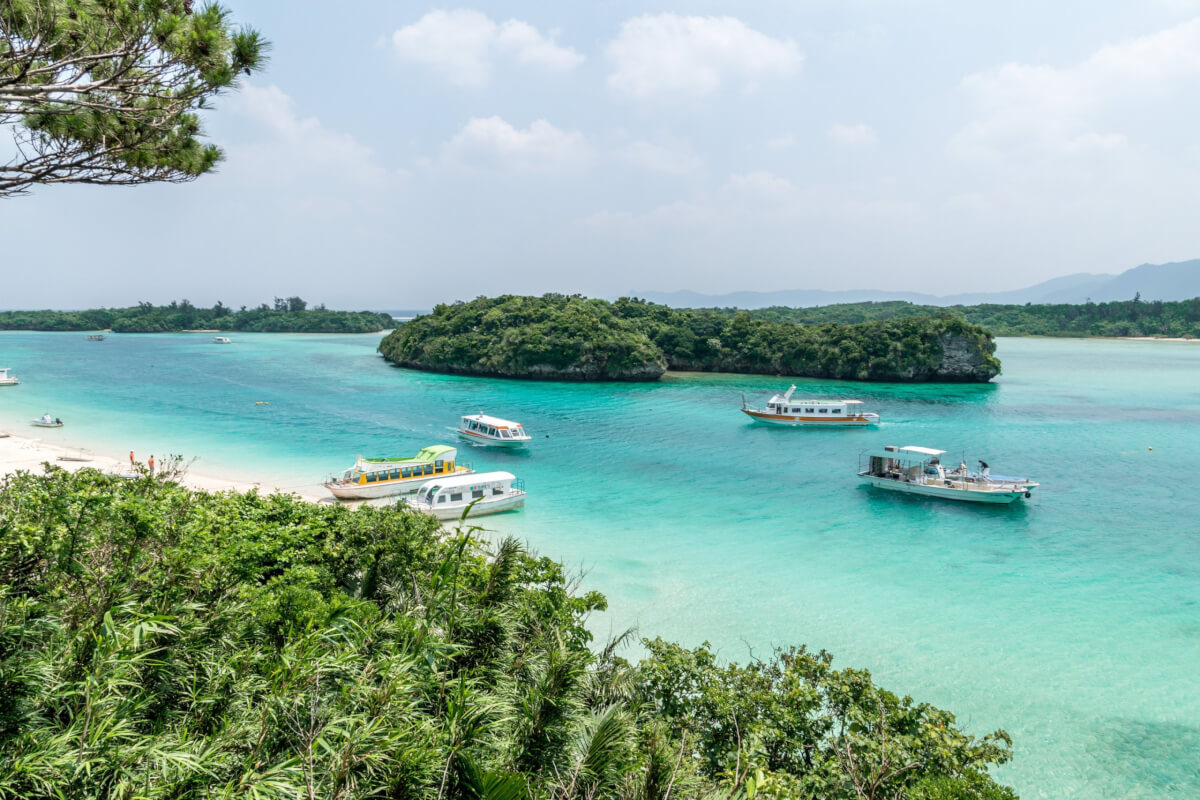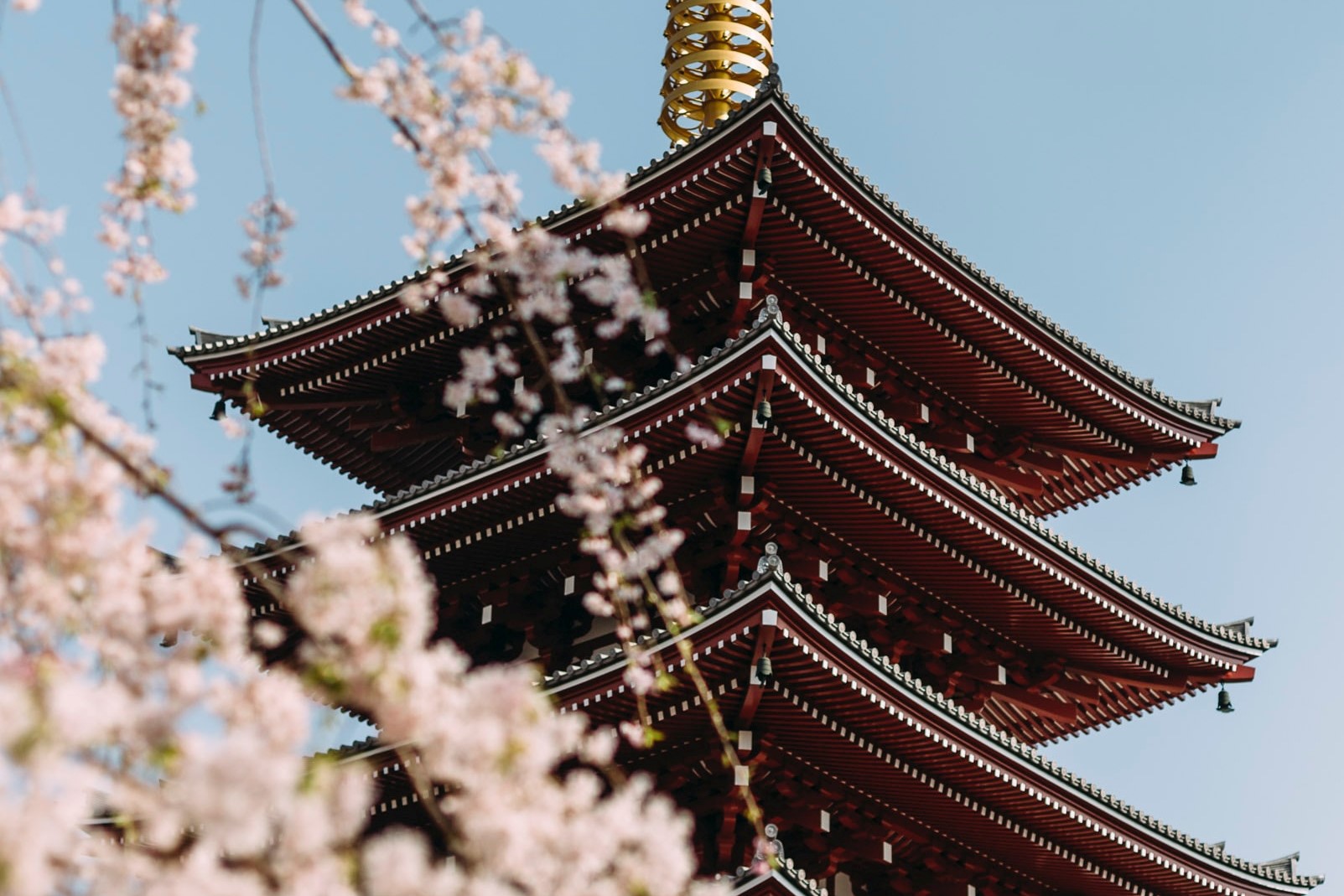Japan is an island country known for its beautiful landscape, with a rich variety of mountains, lakes and forest. About 70% of Japan is covered in mountains, providing great hiking options. If you are looking to escape from the busy cities and reconnect with nature, the hiking trails of Kumano Kodo are a great option for you. Kumano Kodo refers to a network of ancient pilgrimages trails situated across the Kii peninsula in southern Kansai region.
Kodo means “old ways” and pilgrims have walked the mountainous trails to visit Kumano, a center of mountain worship, since ancient times. The hiking trails have been in use for over 1,000 years and are designated as UNESCO World Heritage. There are still several sacred sites including the famous Kumano Sanzan, Hongu Taisha, Hayatama Taisha and Nachi Taisha, the three grand shrines, which have played a significant role for centuries, in south eastern Wakayama prefecture.
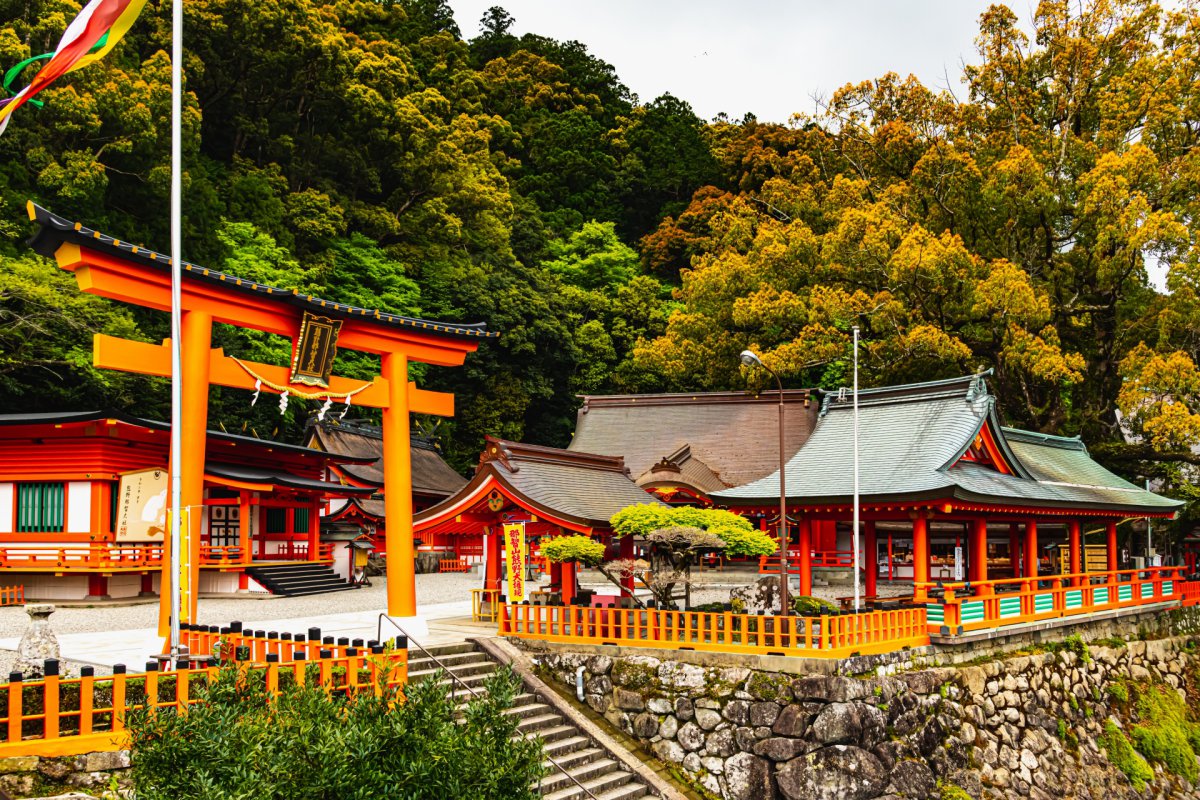
The routes are: Nakahechi, Ohechi, Iseji, Kohechi & Omine Okugake routes. Originally all the trails were designed to be a religious experience and some parts were (are) quite the challenge. Kohechi, Omine Okugake are classified as the most difficult ones, the two are more isolated mountain trails that are only recommended for the experienced hikers and require careful planning. All the trails together form multi-day hikes, but you can also easily break them up in shorter hikes. Most of the hiking is done between 100 and 600 meters above sea level.
Walking around the sacred forest will be a magical experience and will help you understanding the long history of the Japanese culture better. It also helps you feel relaxed through a refreshing hiking experience as well. In this article, we will introduce our recommended parts of the hiking trails in Kumano Kodo. We will also provide the hiking maps and the beginning of the trails.
1. Daimonzaka (Kumano Nachi Taisha & Nachi waterfalls)
Daimonzaka Kumano Nachi Taisha & Nachi waterfalls, located in Wakayama prefecture, is part of the Nakahechi trail. This an ideal hike for those who are looking for nothing too challenging, or when you are travelling with children. The 2.7-km-trail is part of starts from Daimonzaka, a staircase consisting of countless numbers of cobblestone steps lined with centuries old Japanese cedars. The beautiful stone steps takes you to Kumano Nachi Taisha, one of the three grand shrines designated as UNESCO World Heritage Site. Seiganto-ji is a Buddhist temple situated next to Kumano Nachi Taisha, from where you can observe a famous waterfall Nachi no Taki. The 133-m-tall-waterfall is widely recognized as a symbolic, scenic spot in the Kumano area.
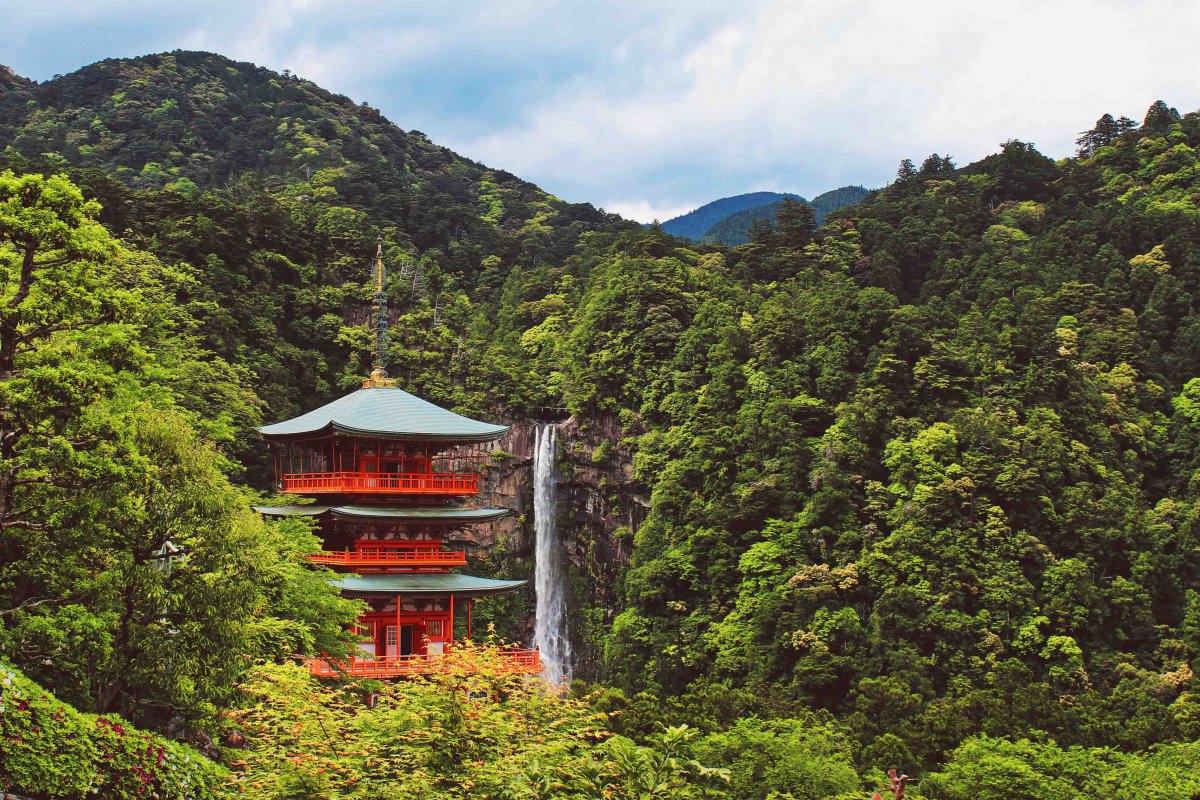
Daimonzaka trail map
Duration: ~1 hour
Length: 2.7 km
How to get to the beginning of the Daimonzaka trail
From Nachi Station, take the bus to Daimonzaka (base of slope), Kumano Kodo (one third up slope) or Nachisan (top of slope).
2. Hosshinmon oji – Kumano Hongu Taisha
Another good option for beginners is part of Nakahechi trail, the most popular part of the Kumano Kodo. The total length of the Nakahechi trail is about 30 km, but with train and bus station along the way, you can also opt for shorter hikes.
The most popular part of the Nakahechi trail is the half-day walk between Hosshinmon-oji and Kumano Hongu Taisha. This part is one of the most popular hiking trails in the whole Kumano area. As the road is relatively flat, with just a few hilly parts, it is enjoyable for everyone. Start your journey from Hosshinmon oji, a symbolic red shrine located near the Hosshinmon oji bus stop, and continue the ancient road with a number of historical spots and small villages, while being surrounded by a peaceful environment. At the end of the trail, pay a visit to Kumano Hongu Taisha, listed as one of the three grand shrines in Kumano. This historical structure standing there for centuries, is likely to be one of the highlights of your trip!
Hosshinmon oji – Kumano Hongu Taisha trail map
Duration: ~2.5 hrs
Length 6.9 km
How to get to the beginning of the trail
From JR Shingu station take a bus to Hosshinmon oji bus stop
3. Gyuba doji – Tsugizakura oji
The part of the Nakahechi trail between Gyuba Doji and Tsugizakura-oji is another suitable option for beginners. the with different tourist spots located along the 6.5-kilometer trail. As most part of the trail is completely paved with concrete, it is accessible by bus and easy to walk around. Gyubadoujizo is a small statue situated 20 minutes from the nearest bus stand, and one of the symbolic landmarks along the trail. Chikatsuyu refers to a peaceful area which was once developed as a post station offering accommodation for travelers. Some traditional buildings are renovated and currently used as modern facilities such as cafes and museums.
Gyuba doji trail map
Duration: ~2 hour
Length: 6.5 km
How to get to the beginning of the trail
From Kii-Tanabe JR station take the bus to Gyuba-doji-guchi bus stop.
4. Nakahechi ‘Imperial’ Trail (multi-day hike)
If you are looking for a multi day hike, to make the most of your time and completely experience the Kumano area, you can also choose to walk the Nakahechi Main Trail. The trail has been walked by popular members of the imperial family and other high ranking people earning its nickname The Imperial Route. The 38-kilometer-trail starts in Takijiri-Oji and finishes at the Kumano Hongu Taisha and covers a great number of tourist attractions and historical spots in nature. The core trail of the Kumano Kodo links the three Grand Shrines of Kumano and is well developed. It has clear signage in both English and Japanese.
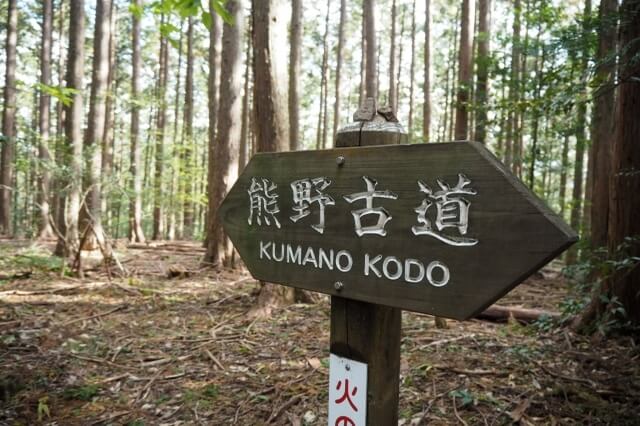
Spending a couple of days will gives you a plenty of time exploring each spot while taking a relaxing walk along the peaceful trail. Depart from Takijiri-oji shrine, and walk for approximately 17 kilometers until you finally reach Chikatsuyu or Nonaka area where we recommend to spend the night. There are several lovely ryokan located along the trail offering overnight accommodation and meals. On the second day, enjoy exploring the historic spots and shrines on your way to Kumano Hongu Taisha, a sacred shrine worth to visit in spite of the challenging trail! If you feel like more hiking, you can also opt for continuing the last part to Kumano Nachi Taisha. This will add another 27 kilometer to the route, see route 6 and 7 below.
Nakahechi trail map
Duration: ~16 hours
Length: 38 km
How to get to the beginning of the Nakahechi trail
From Kii-Tanabe JR station take a bus to Takijiri-Oji bus stop.
5. Akagi-goe & Dainichi-goe trail
Don’t miss the hot spring experience when hiking in Kumano! Close to the Hongu Taisha there is a hot spring resort called Yunomine Onsen, one of the oldest hot springs in Japan with a long history dating back around the 4th century. Pilgrims used to cleanse their bodies here before visiting the Hongu Taisha and other shrines. Enjoy a refreshing onsen when hiking the Akagi-goe & Dainichi-goe route, a small detour from the main Nakahechi trail, which is suitable for experienced hikers. Pass through Akagi-goe, which was newly added to UNESCO World Heritage Site in 2016, and pay a visit to Kumano Hongu Taisha. You will never get bored as there are several historic spots and ruins along the trail. From Kumano Hongu Taisha to Dainichi-goe, the trail is short but challenging with countless numbers of steep stone steps.
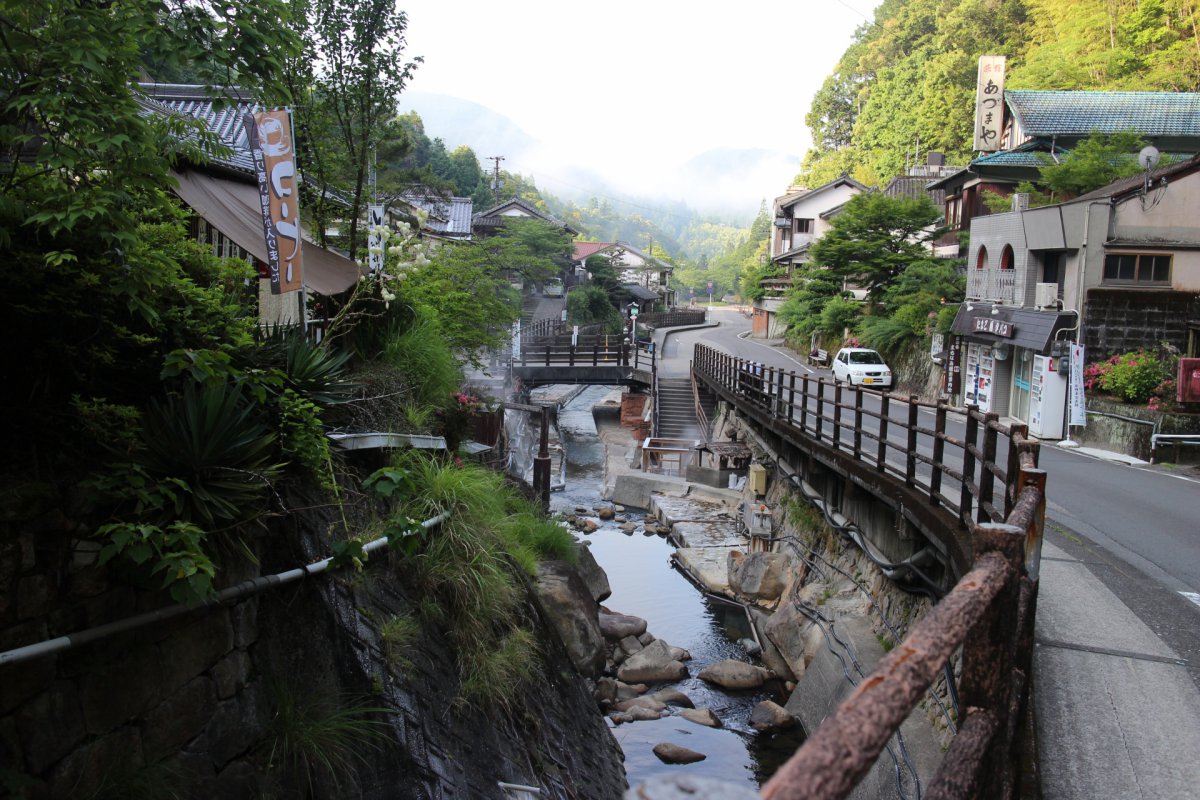
Akagi-goe trail map & Dainichi-goe trail map
Duration: ~5.5 hours
Length: 18.2 km
How to get to the beginning of the Akagi-goe & Dainichi-goe trail
Start your hike in Yunomine Onsen, which is connected to Kii-Tanabe station by buses.
6. Kogumotori-goe
For the more advanced hikers, Kogumotori goe is another option that offers some amazing scenic vistas of the Kumano mountains. The 13-kilometer trail is full of beautiful spots such as a peaceful river, historical ruins, and an iconic Jizo statue. Although parts of the trail are challenging with gentle ups and downs, it enables you to immerse yourself deep in sacred, untouched forests. Hyakken Gura is the most scenic spot along the trail, which fascinates tourist with a breathtaking view of the giant sacred mountains. There are no restaurants located along the trail, so make sure to bring lunch!
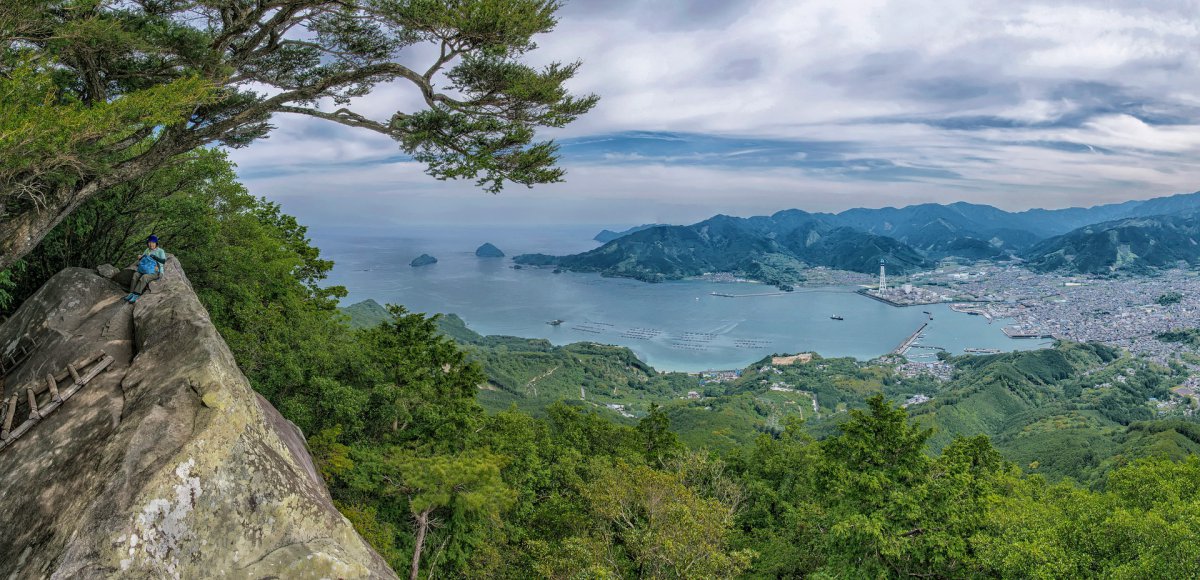
Kugomotori-goe trail map
Duration: ~4.5 hrs
Length: 13 km
How to get to the beginning of the Kugomotori-goe trail
The trail is commonly walked in either direction, you can either take a bus to Kugochi or Ukegawa and start from there.
7. Ogumotori-goe
Ogumotori-goe is considered as one of the toughest trails in Kumano area. Ogumo literally means huge clouds, a fitting description as you will need to walk the steep trail across giant mountains with the peaks almost reaching the clouds. The trail is full of ups and downs, and the rough slopes get away your energy and confidence. Along the trail, you can visit Kumano Nachi Taisha and other spiritual spots. Waroda-ishi is a giant rock with a legendary story: it is believed that the deities of Kumano area sat on the rock to enjoy a chat over tea. Along this trail there are no restaurants so you will need to pack your own food and drinks.
Ogumotori-goe trail map
Duration: ~5 hours
Length: 14.5 km
How to get to the beginning of the Ogumotori-goe trail
The Ogumotori-goe trail can also be walked in either direction, to the start take a bus to Kugochi or Nachisan and start from there.
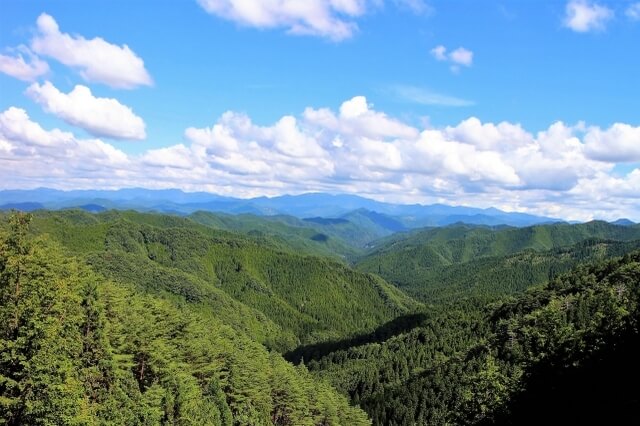
Other parts of the Kumano Kodo trail
In this blog we listed our recommend parts of the Kumano Kodo Pilgrimage. They all belong to the Nakahechi trail, which is well preserved and relatively easy to walk. As mentioned before there are however more trails: Ohechi, Kohechi, Iseji, & Omine Okugake. The Ohechi trail follows the southern coastline of Kii peninsula is only partially accessible and requires careful planning due to the lack of public transportation and tourist facilities. The Kohechi trail is a mountainous trail connecting Kumano with Koyasan. The multi-day hike is not suitable for beginners and should only be undertaken with careful planning and preparation. Only parts of the original Iseji trail remains today, most parts are paved road and town. The Oseji trail was extremely popular in the Edo period.
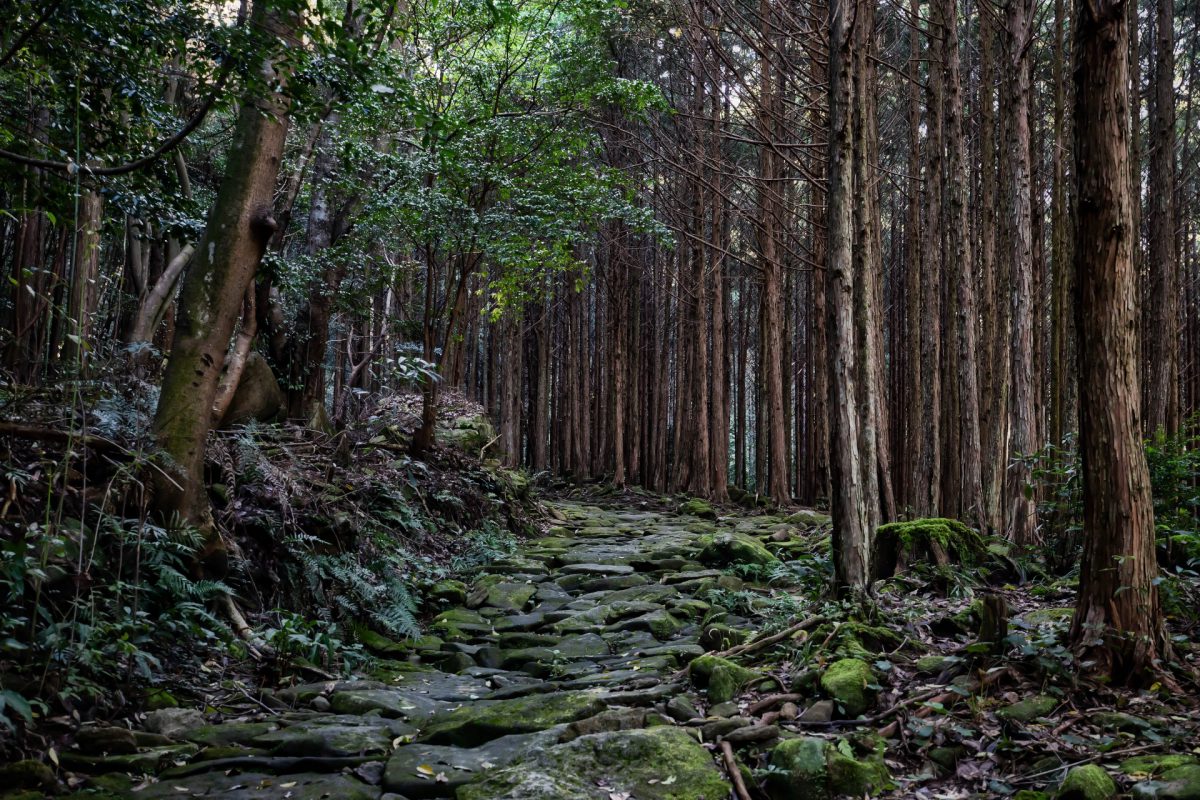
Don’t forget to check out our private tour!
If you need some help to organize your trip to Japan, you should definitely check out our private tours with local, English speaking guides. We’d be happy to help you make your trip to Japan a safe, comfortable, and unforgettable memory.
Kyoto Food and Drink Tour @ Arashiyama
Kyoto is one of the most popular tourist destinations in Japan and easy accessible by train from Wakayama. Combine your hiking trip with our food and drink tour at the Arashiyama area which boasts a number of tourist attractions and amazing spots.
Mount Fuji Pilgrim Hiking (1st to 5th Station)
Check out another hiking spot designated as UNESCO World Heritage Site! Mount Fuji is the iconic mountain that symbolises Japan. Mount Fuji is located between Yamanashi and Shizuoka prefecture. Explore historical spots in the sacred mountain while enjoying a refreshing hiking from the base of the mountain up to its 5th station.
Hiking is a perfect way to immerse yourself in nature and get refreshed and the Kumano Kodo hiking trail offer some of the best options for everyone. There are easier parts that are accessible to everyone as well as more advanced hiking trails for the more experienced hikers. You can take a suitable route depending on your skill and hiking experience.
Daily buses operate in the Kumano area, but we recommend you to check the timetables beforehand. In addition, when you want to stay overnight, make sure to book your accommodation beforehand. Lastly, wear appropriate hiking clothing and always bring some snacks and drinks! The abovementioned trails offer a great experience, and we recommend you to walk some parts of the trails if you have the chance. It will be a great experience to visit one of the most sacred places in Japan full of impressive discoveries!
Follow us on Instagram or Facebook for more travel inspiration. Or tag us to get featured!
Happy travelling!
Articles you might also like
This post may contain some affiliate links. When you click through and make a purchase we may receive some commission, at no extra costs to you
